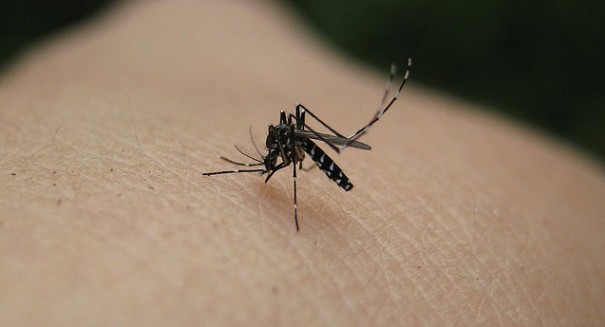
The Asian tiger mosquito is very effective at spreading infectious disease.
The Asian tiger mosquito’s name sounds just as menacing as it really is. Named for its distinctive black and white stripes, areas all across America are being invaded by these small, blood sucking pests. They are believed to have been brought to the United States through a shipment of tires that were delivered in Texas. Tires are well known breeding grounds because of their ability to hold standing water, which is required for mosquito breeding to take place.
This aggressive species is worrisome for many reasons. Unlike other mosquito species, Asian tiger mosquitoes bite throughout the day and night. They will drink from humans and any other animal species. According to associate professor of Entomology at Rutgers University, Dina Fonesca, “You can swat all you want, but once it’s on you, it doesn’t let go.”
The Asian tiger mosquito is just another insect, on a long list of species, currently threatening the United States. In much of Florida, Gallinipper bites are reported as feeling like being stabbed. Gallinippers are a shaggy-haired variety of mosquito.
The Asian tiger mosquito is very effective at spreading infectious disease. In fact, they reportedly carry up to 20 different diseases, including West Nile virus, dengue fever, yellow fever, chikungunya disease and two different types of encephalitis.
Chikungunya disease is rarely ever fatal, but there is no treatment or vaccine for the illness. Most people who contract the disease will recover on their own in about 2 weeks. During that time, the symptoms can be debilitating and consist of severe joint pain, fever, headache, rash, nausea, vomiting and fatigue.
According to the Centers for Disease Control and Prevention, while infected, if a person is bitten by another mosquito, the disease can be transmitted to others. This could rapidly result in a massive epidemic in a short period of time.
The Asian tiger mosquito was first introduced to the United States in the 1980s. Since then, the species has spread to 26 different states. Those states are primarily in the eastern portion of the United States. The species can also be found in southern Europe, South and Central America and some Pacific islands. Part of the reason it has been so effective at establishing new territories is due to the ability of the eggs to withstand cold weather, even though they thrive in warm climates.
To prevent further spreading of the species, experts recommend eliminating all sources of standing water, wearing insect repellant and covering arms and legs with long sleeves when outside. These 3 things can effectively discourage their breeding and eliminate their food choices.
Leave a Reply